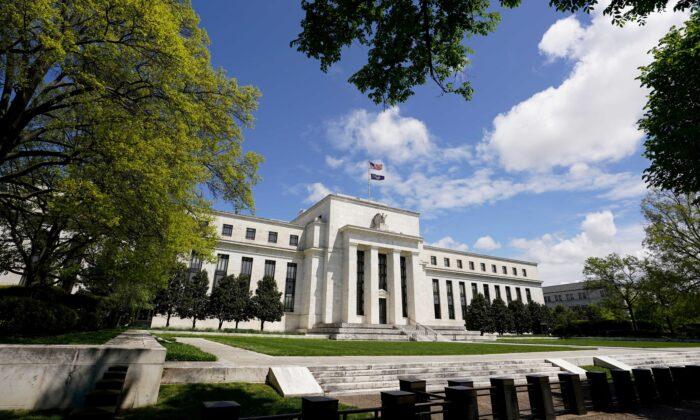WASHINGTON—If inflation keeps rising at its current pace in coming months rather than subsiding as expected, Federal Reserve policymakers may need to adopt “a more aggressive policy response” next year, Fed Governor Christopher Waller said on Tuesday.
For now, Waller said in remarks to the Stanford Institute for Economic Policy Research, he continues to believes the economy has seen the worst of the most recent coronavirus wave, that labor and other supply shortages will ease over time and that “the escalation of inflation will be transitory,” with price increases moving back to the Fed’s 2 percent goal next year.
That would mean any increase to the Fed’s key policy interest rate from its current near-zero level “is still some time off,” he said, a view in synch with most of his colleagues.
The Fed’s most recent “dot plot” depicting policymakers’ rate-hike expectations show about half seeing the Fed lifting rates by the end of next year, with the other half expecting liftoff by the end of 2023.
A longer wait on raising rates could give the economy more time to achieve full employment, the other leg of the Fed’s dual mandate.
But Waller said he feels the risks are shifting, and he is now “greatly concerned” the current fast rise in prices may continue.
“If monthly prints of inflation continue to run high through the remainder of this year, a more aggressive policy response than just tapering may well be warranted in 2022,” Waller said.
The consumer price index has risen at a more than 5 percent annual rate for four months in a row, a run not seen since 1990.
“If inflation were to continue at 5 percent into 2022, you‘ll start seeing everybody potentially—well, I can’t speak for anybody else, just myself, but—you would see people pulling their ’dots’ forward and having potentially more than one hike in 2022,” he said.

Tapering?
To make room for such action, if needed, Waller has been pushing for the Fed to start trimming its $120 billion in monthly asset purchases.On Tuesday, he said the economy was ready for such a move, calling for it to begin next month and to be completed by the middle of next year.
In particular, he said, the “mind-boggling” reduction in unemployment to the current 4.8 percent from a 14.8 percent pandemic high shows the labor market is getting close to its pre-pandemic strength, particularly after accounting for an estimated 2 million people who retired during the crisis and, he said, are not likely to come back.
Most Fed policymakers agree with Waller that it will soon be time to taper, and they are widely expected to announce a decision to do so when they meet in early November.
It is not clear how widely shared is Waller’s view that the labor market is close to its pre-pandemic strength.
Some, including Richmond Fed President Thomas Barkin, say they are open to the possibility that as wages rise, more workers may come in from the sidelines, allowing the economy to support more jobs and, at the same time, relieving some upward pressure on inflation.
Waller sounded more cautious, noting that firms have more pricing power now than in many years, and that consumers seem to be accepting higher prices.
He cautioned against assuming that outsized and likely onetime increases in things like used auto prices mean high inflation is only temporary. If large “onetime” price increases rotate among enough goods, it could push overall inflation higher than desired.
“One should exhibit caution in dismissing data as outliers,” he warned.





